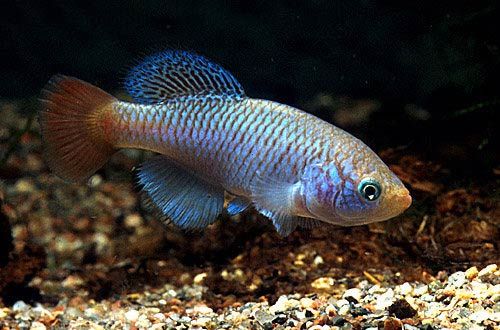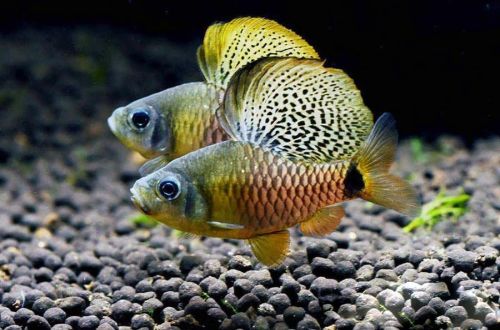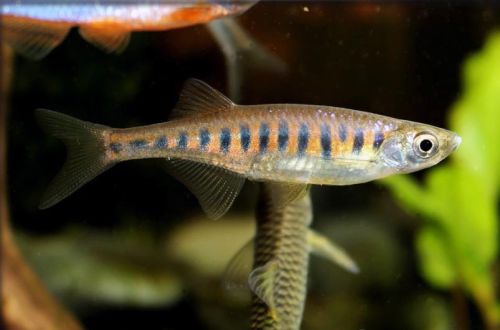
Notobranchius uganda
Uganda notobranchius, scientific name Nothobranchius ugandensis, belongs to the family Nothobranchiidae (African rivulins). Bright temperamental fish. Easy to keep, with an unusual breeding strategy.

Contents
Habitat
The fish is native to Africa. Inhabits shallow streams and rivers that are part of the drainage of lakes Alberta, Kyoga and Victoria in Uganda and Kenya. A typical biotope is a shallow muddy water body with a silty bottom that periodically dries up during the dry season. Aquatic vegetation is usually absent.
Brief information:
- The volume of the aquarium – from 40 liters.
- Temperature – 24-30°C
- Value pH — 6.0–7.0
- Water hardness – soft (4-10 dGH)
- Substrate type – dark soft
- Lighting – subdued
- Brackish water – no
- Water movement – little or no
- The size of the fish is 5–6 cm.
- Nutrition – any food rich in protein
- Compatibility – keeping in a group with one male and several females
Description
Adult individuals reach a length of about 6 cm. Males, unlike females, are somewhat larger and brighter in color. The main color of the body is blue, the edges of the scales have a burgundy border. Back, dorsal fin and tail with a predominance of red pigment. The females are painted in light gray tones. Fins translucent, colorless.
Food
The diet should be checked with the suppliers. Usually, the basis of the diet is live or frozen foods. However, some breeders teach alternative foods in the form of dry flakes, pellets, etc.
Maintenance and care, arrangement of the aquarium
The optimal size of the aquarium for a group of 4-5 fish starts from 40 liters. The content is simple. It is sufficient to ensure the correct composition of the water (pH and dGH) within the allowable temperature range and to prevent the accumulation of organic waste (feed residues, excrement). Arrangement is optional. If breeding is planned, then fibrous peat treated for use in an aquarium, coconut fibers, or a special spawning substrate are used as soil. The lighting is subdued. Excess light leads to fading of the color of males. Floating vegetation will be a good means of shading, and will also prevent fish from jumping out.
Behavior and Compatibility
Males exhibit territorial behavior and are intolerant of male relatives. The females are peaceful. In a small aquarium, it is desirable to maintain a community of one male and several females. Compatible with other species of comparable size, with the exception of the closely related Notobranchius.
Breeding / breeding
Breeding Notobranchius uganda is a long and complicated process and is hardly within the power of a novice aquarist due to the need to recreate the processes occurring in nature.
In its natural habitat, spawning occurs at the end of the wet season with the approach of drought. Fish lay their eggs in a layer of soil. As the reservoir dries up, the fertilized eggs are “preserved” in a semi-dry substrate for several months. In this state, they are until the rains begin. When the reservoirs are filled with water again, fry begin to appear. They grow very quickly, reaching puberty by 6-7 weeks.
Fish diseases
Hardy and unpretentious fish. Diseases manifest themselves only with a significant deterioration in the conditions of detention. In a balanced ecosystem, health problems usually do not occur. For more information on symptoms and treatments, see the Aquarium Fish Diseases section.





